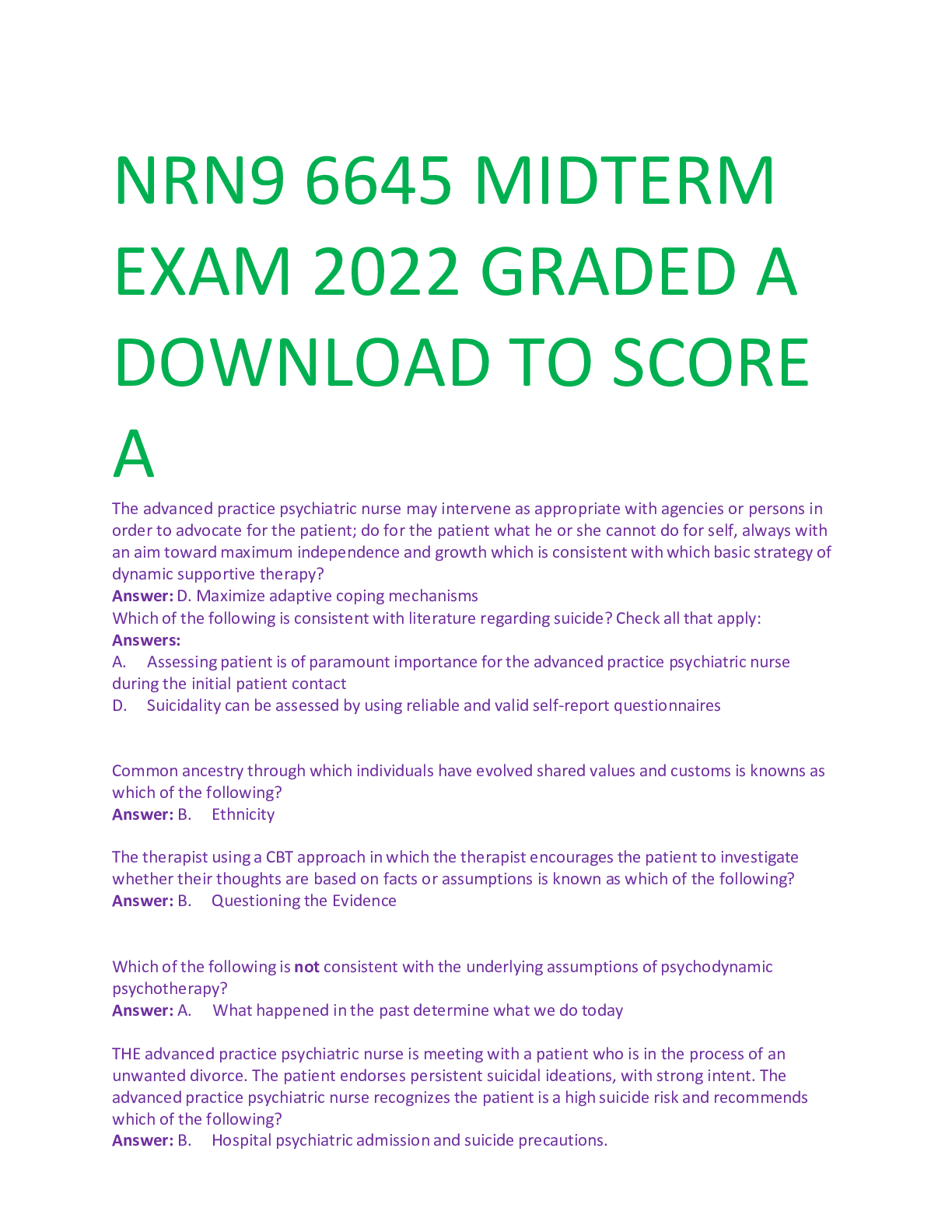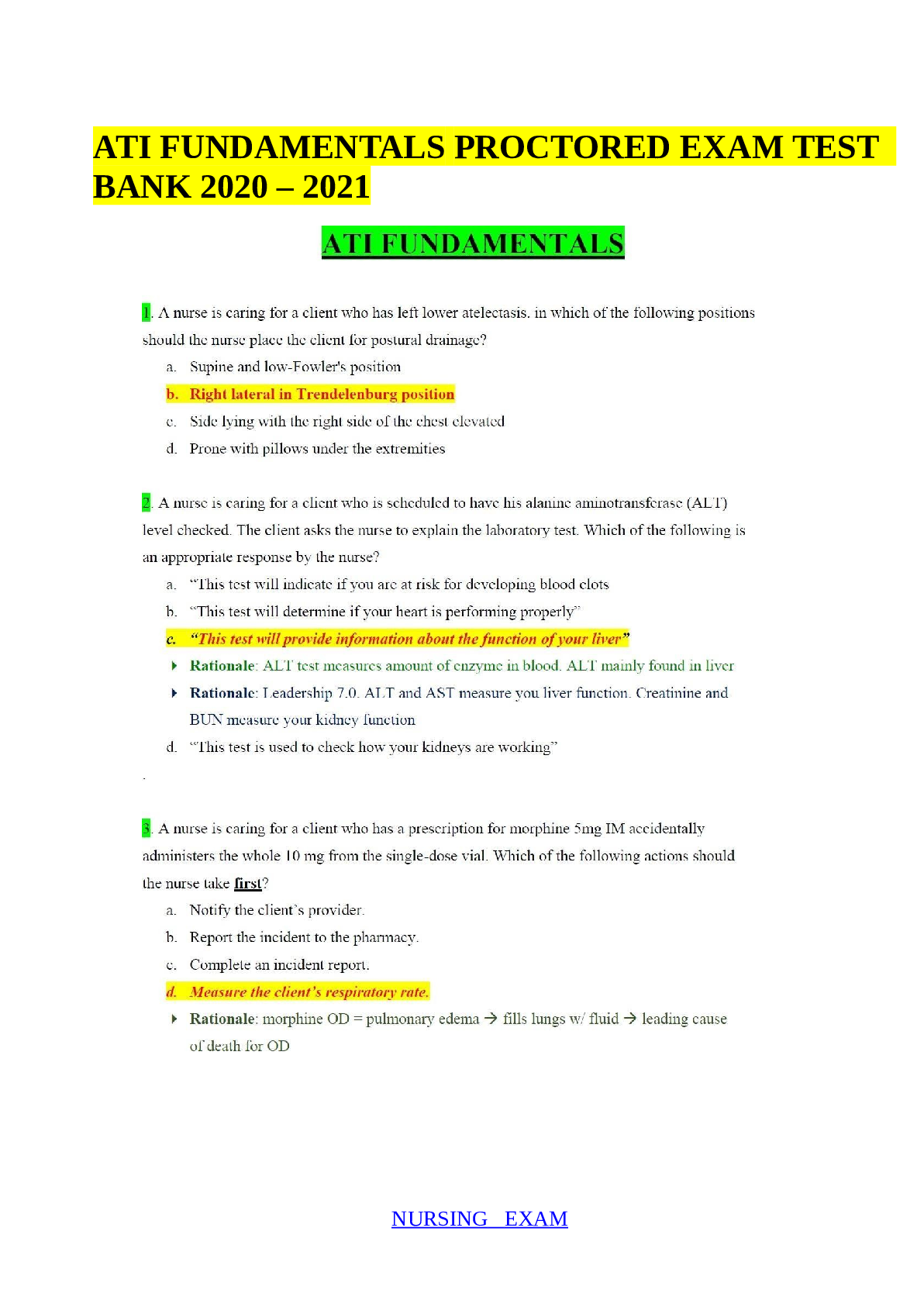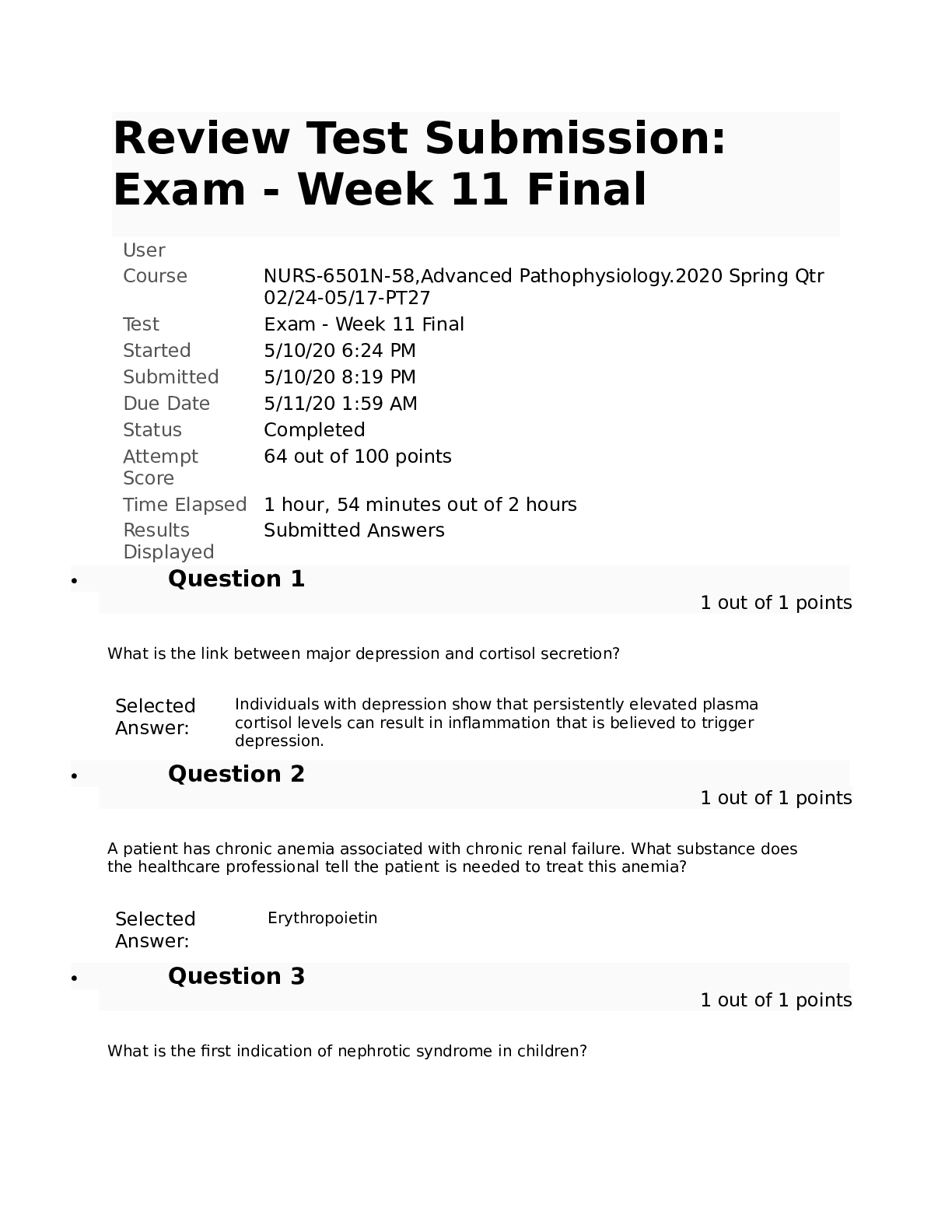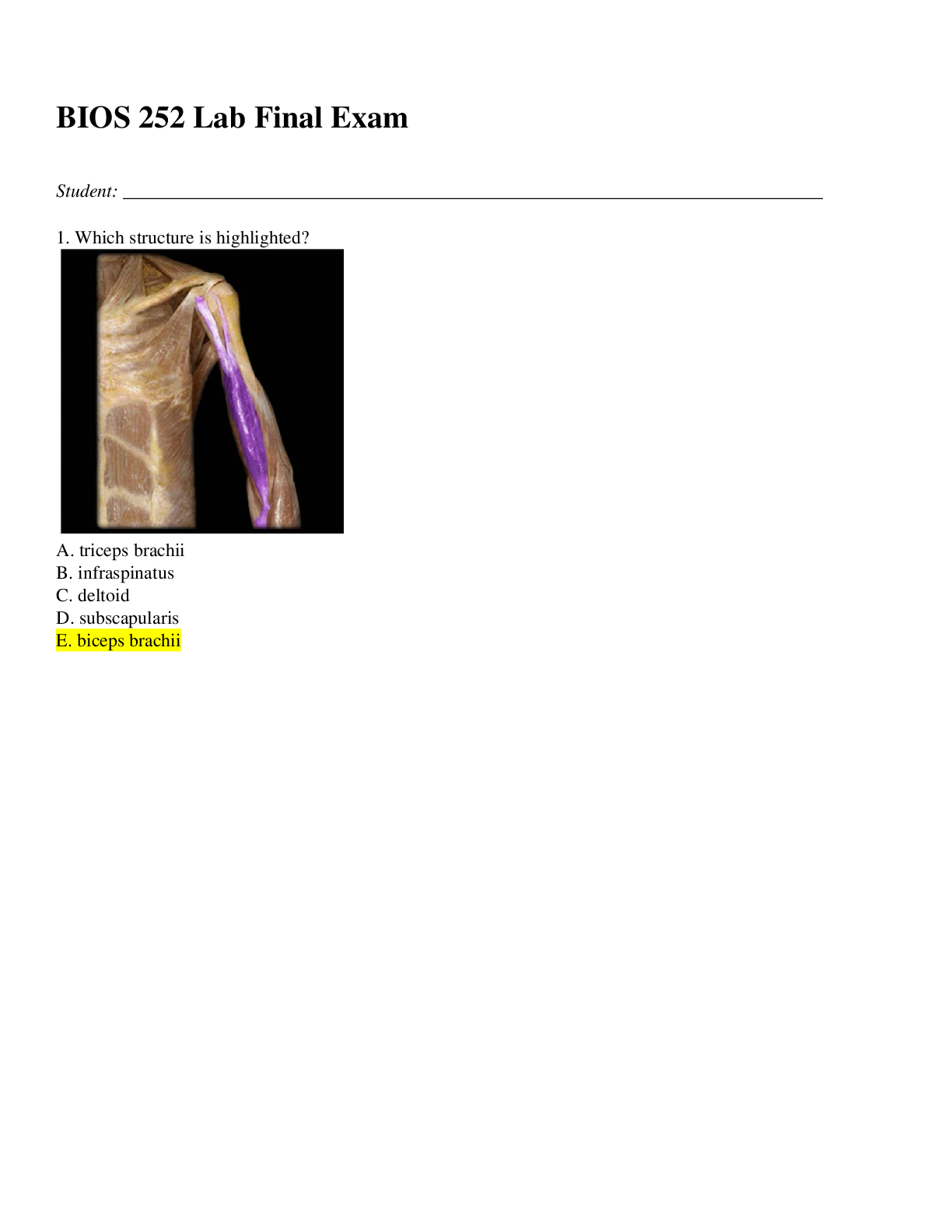CHEM210-1 SU16 LAB FINAL EXAM
Document Content and Description Below
CHEM210-1 SU16 LAB FINAL EXAM NAME:________________________________ SCORE: _______/ 150 1. Provide the name of the circled functional group in the following molecules. ____________________ ________... ___________ ______________________ _____________________ A. Primary amine B. secondary amide C. tertiary amine D. alkene E. alkyne F. hydroxyl group G. cyano group H. carboxylic acid I. ester J. primary amide 2. Draw the important resonance structures for the molecule shown below. 3. Which of the following molecules has the lowest pKa value for the most acidic H atom(s)? A B C D 4. Absorption of what type of electromagnetic radiation results from the interaction between the radiation and the change in the net dipole moment of the absorbing functional group as molecular vibration occurs? A) X-rays B) radio waves C) microwaves D) ultraviolet light E) infrared 5. One of the following functional groups, may show a single weak to medium IR adsorption peak in the 2100 to 2250 cm-1 range. Depending on the structure of the compound this peak is sometimes not present, making it easy to misinterpret the spectrum. Which functional group is it? A) carbonyl B) alkyne C) alcohol D) nitrile E) carboxylic acid 6. Rank the following bonds in order of increasing stretching frequency (cm-1) in IR spectroscopy: lowest(1) _____ (2) _______ (3) _______ highest (4) ______ 7. Which of the following compounds has the lowest carbonyl stretching frequency? This study source was downloaded by 100000831777157 from CourseHero.com on 07-12-2022 04:13:07 GMT -05:00 https://www.coursehero.com/file/28286558/CHEM210-1-SU16-LAB-FINAL-EXAM-Blank-Copy-1doc/ CHEM210-1 SU16 LAB FINAL EXAM NAME:________________________________ SCORE: _______/ 150 8. Match the following IR spectra with the correct structure (write the correct answer in a blank portion of each spectrum) A B C D 9. Absorption of UV-visible energy by a molecule results in: A) vibrational transitions B) electronic transitions C) rotational transitions D) nuclear transitions E) none of the above 10. Which of the following compounds absorbs the longest wavelength of UV-visible light? A) (E)-but-2-ene B) (Z)-but-2-ene C) hex-1-ene D) (Z)-1,3-hexadiene E) (E)-1,3,5-hexatriene 11. As a general rule, the addition of a simple carbon substituent such as a methyl group to a conjugated diene will increase the value of max by approximately ____________ nm. A) 1 B) 5 C) 50 D) 100 E) 0 12. Rank the following types of excitations that occur in UV-vis spectroscopy from highest energy (1) to lowest energy (4). _____n to π* _____π to σ* _____σ to σ* ____π to π [Show More]
Last updated: 2 years ago
Preview 1 out of 6 pages

Buy this document to get the full access instantly
Instant Download Access after purchase
Buy NowInstant download
We Accept:

Reviews( 0 )
$9.00
Can't find what you want? Try our AI powered Search
Document information
Connected school, study & course
About the document
Uploaded On
Jul 12, 2022
Number of pages
6
Written in
Additional information
This document has been written for:
Uploaded
Jul 12, 2022
Downloads
0
Views
99







.png)
.png)














